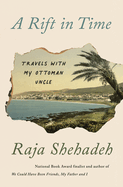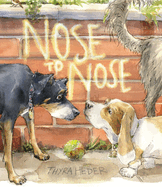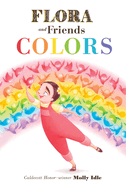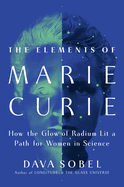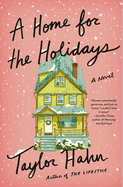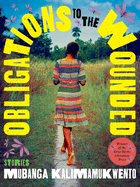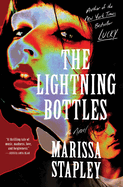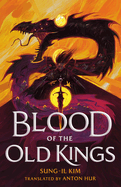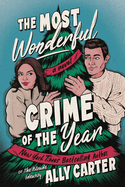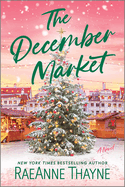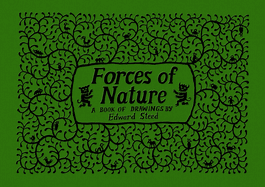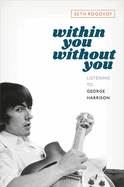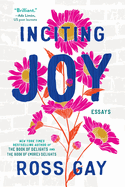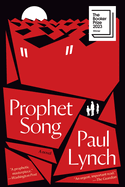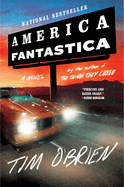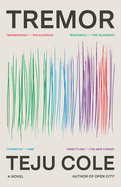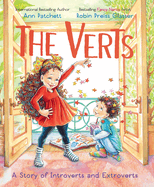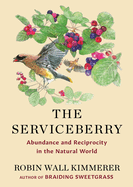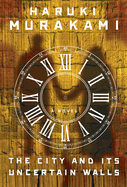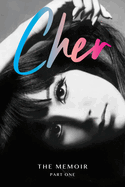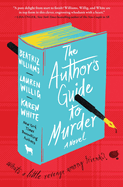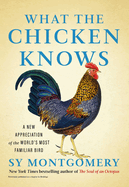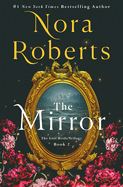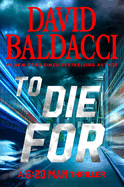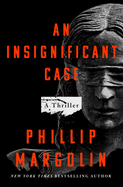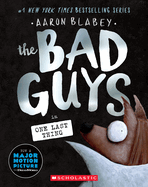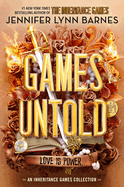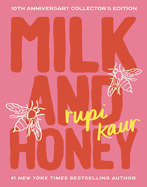Friday, October 11, 2024
Among the outstanding titles reviewed in this week's issue are Final Cut by comics legend Charles Burns, whose surreal and astute new graphic novel depicts teens' creative experimentations with storytelling through film; and Rift in Time by lawyer and human rights activist Raja Shehadeh, who poignantly blends family history with hope for the future of Palestine; as well as The Elements of Marie Curie by Dava Sobel, who "paints a human portrait not of an isolated genius, but of a woman who existed in and built scientific community." Meanwhile, Nose to Nose by Thyra Heder is a "smart, funny, and playful picture book" about "a massive canine misunderstanding" when a new pooch tries to break the ice with his neighbors.
In The Writer's Life, acclaimed translator and novelist Anton Hur discusses his work on Korean author Sung-il Kim's epic high fantasy, a genre Hur had never worked in previously but quickly grew to adore as he "focused on creating the right author's voice in English."
The Undercurrent
by Sarah Sawyer
A new mother returns to her Texas hometown seeking answers in Sarah Sawyer's debut, The Undercurrent, an unsettling literary suspense novel about difficult decisions, broken families, and the lengths to which mothers will go for their children.
In 2011, Bee is struggling with postpartum depression and isolation. When Leo, her brother's lifelong best friend and her first love, asks to meet, she's stunned to learn from him that her troubled, unpredictable twin, Gus, wants to talk to her after 17 years. Then she reads about a possible break in the case of Deecie, a girl who went missing during the summer of 1987, when Bee feels that everything fell apart. Bee decides it's time for her to finally return to Texas and introduce her baby to her mother.
In 1987, two women watch their sons grow into unknowable young men, creatures on the edge of adulthood with secret thoughts and activities. Mary has dedicated so much of her life to being Bee and Gus's mother that she clings to the dream of normalcy until an unplanned pregnancy and a terrible discovery force her to reevaluate everything. Across the street, Leo's mother, Diana, struggles to maintain her career and parent a child who has been getting in trouble at school for setting fires. Then Deecie disappears.
With beautiful, insightful prose and a thoroughly developed cast of flawed, relatable characters, Sawyer has crafted paragraphs that readers will stop to savor even as they breathlessly race through her pages. The Undercurrent is a great fit for book groups and fans of Angie Kim and Chris Whitaker. --Suzanne Krohn, librarian and freelance reviewer
Discover: Sarah Sawyer combines beautiful, insightful prose with a propulsive mystery in this literary suspense novel that's perfect for fans of Angie Kim and Chris Whitaker.
A Home for the Holidays
by Taylor Hahn
Complicated loss, maternal secrets, and newfound hope are blanketed by Chicago snow in Taylor Hahn's tenderhearted novel A Home for the Holidays. It's nearing Christmas when wedding singer Mel Hart's mother dies after an enduring problem with alcohol at the same time that Mel's situationship with a bandmate ends. Reeling from the complexities of her grief, Mel has barely begun her "crash course in death logistics" when a woman claiming to be her mother's estranged best friend appears, asking for a chance to tell Mel about the version of her mother she never knew. A hesitant but aching Mel agrees.
Within Barb's yellow house, which smells "like holiday Yankee candles and baking and a hint of mildew," Mel discovers more than old photo albums and stories about the talented woman her mother was. A connection with Barb's son and blossoming friendships with Barb's daughter and grandson prompt Mel to wonder if her loss means being truly alone--or if there could be a different sort of life ahead.
A Home for the Holidays is well-balanced and lovely. Hahn (The Lifestyle) writes funny and heartwarming scenes as deftly as she renders the illogical nature of grief (as when Mel replies "But I have a Christmas tree with me" to the doctor on the phone who informs her of her mother's death) and how it drives humans to search for answers. Those seeking some heft in their seasonal reading may find comfort in the truism underpinning Hahn's novel: that the home one needs now might not be the home one has always known, and that honoring both is possible--for the holidays and beyond. --Kristen Coates, editor and freelance reviewer
Discover: This tenderhearted novel explores how mothers and daughters can love and fail each other, and how home can be an active choice one makes for oneself.
Obligations to the Wounded
by Mubanga Kalimamukwento
Zambian author Mubanga Kalimamukwento's Obligations of the Wounded contains 16 stories, all but one spotlighting the lives of Zambian women in and out of their native country: they're victims and survivors, resigned and ferocious, trapped and free. Obligations won the 2024 Drue Heinz Literature Prize, which has honored writers of short fiction since 1981, chosen by Angie Cruz (Dominicana), who deemed Kalimamukwento's work "a graceful, touching, and generous collection."
The wounds of familial relationships loom throughout. In "A Doctor, a Lawyer, an Engineer, or a Shame to the Family," a new aunt writes a five-part "cheat sheet for how to not disappoint your Zambian parents" for her infant niece, which already demands the impossible: "Be born first (and male) AND MALE." Young girls face fearful futures in stories like "Inswa," about a 13-year-old who's married off to the old, already-many-times-married village chief, seemingly in retaliation for discovering her sexuality with her best friend. But women impressively rebel in "Whisper Down the Lane," when students return their teacher's zealous abuse; and in "#BaileyLies," in which a struggling journalist publicly exposes a foreign humanitarian's mendacious memoir.
In a few stories, Kalimamukwento strikingly experiments with form--visual layout, inventive punctuation, extended white spaces--emphasizing a sense of elliptical not-knowing. Crossed-out text cleverly reveals the unfiltered, honest conversations social norms won't allow. For the dispossessed and discarded--too many of them "wounded" women--independence and agency are hard-won victories. Kalimamukwento, a Zambian Fulbright scholar with a U.S. law degree, writes with empathic knowing, deftly treading between resignation and hope. Her enigmatic storytelling underscores that silence is not an option, that bearing witness is obligatory. --Terry Hong
Discover: Mubanga Kalimamukwento's superb 16-story collection, Obligations to the Wounded, illuminates the complicated experiences of Zambian women on both sides of the globe.
The Lightning Bottles
by Marissa Stapley
Marissa Stapley's The Lightning Bottles is part love story, part mystery. Jane Pyre, a retired rock 'n' roll singer, and her teenage neighbor set out to uncover what happened when Jane's husband and band partner, Elijah Hart, mysteriously disappeared in 1994. In 1999, Jane is widowed, widely ridiculed by the media, and desperate to have a private life. She moves to the German countryside to do just that, and is surprised that her neighbor, a friendless girl named Hen, is a fan of her former band, the Lightning Bottles, and a firm believer that Elijah is not dead.
The two misunderstood characters join together for a road trip where they follow clues to answer the questions raised when Elijah went missing. Stapley (Lucky) intersperses their journey with flashbacks of Jane and Elijah's relationship as it grows from their initial meeting in an online chat room to a bond they deem unbreakable. Through the formation of the Lightning Bottles, Stapley celebrates the Seattle, Wash., rock scene and how two people find each other and their place in the world. The Lightning Bottles' rise embodies the metaphorical and literal highs of fame, as well as its the rock-bottom lows.
The odd pairing of rock star Jane and country girl Hen creates insightful dialogue as their search becomes increasingly thrilling and revealing. Jane's last shred of hope exists alongside her guilt over how she and Elijah left things, while an all-encompassing passion for music fuels Hen's optimism that her hero is still alive. Stapley's depiction of the 1990s rock scene highlights the transformative power of music and the importance of human connection. --Clara Newton, freelance reviewer
Discover: In novel that combines a heartwarming love story and a thrilling mystery, Lucky author Marissa Stapley portrays characters who find a sense of belonging in one another and in music.
Science Fiction & Fantasy
Blood of the Old Kings
by Sung-il Kim, transl. by Anton Hur
Through a trio of characters on separate paths of survival and resistance to an empire's control, South Korean author Sung-il Kim creates a world of intrigue and heart-pounding drama in Blood of the Old Kings, the first volume in an epic fantasy trilogy.
Loran is determined to avenge the deaths of her husband and child at the hands of the imperial prefect who governs the former kingdom of Arland, and she begs assistance from the dragon sworn to protect the realm. Meanwhile, Cain, an Arlander sent to the capital after his parents were charged with treason, stumbles into a ring of conspiracy while investigating the death of his friend Fienna. And 16-year-old Arienne accepts guidance from a dead sorcerer to escape the Imperial Academy, where sorcerers are forced to enroll so the Empire can harness the power from their bodies after they die. Each character's motivation is personal, but all three become part of something larger as rebellion brews among groups with competing ideologies and methods. The paths they are thrust onto force each of them to make impossible choices and decide what kind of person they are--or are willing to become.
Kim emphasizes plot over character yet still conveys emotional depth, and his focus on ordinary people becoming reluctant heroes is a fresh contribution to the fantasy trope of rebellion against an imperial power. Exciting plot twists and nail-bitingly narrow escapes crescendo as passion for revolution ignites. --Dainy Bernstein, freelance reviewer
Discover: This exciting novel about an empire that controls necromancy and a rebellion that forces ordinary people into heroic roles holds layers of intrigue and suspense.
Romance
The Most Wonderful Crime of the Year
by Ally Carter
Presents are under the tree but the hostess is nowhere to be found in Ally Carter's holiday romance meets mystery romp, The Most Wonderful Crime of the Year. Carter (The Blonde Identity) blends the large cast and locked-room-mystery fun of Knives Out with a rivals-to-lovers romance for a swoony whodunnit that's sure to please.
Fresh off a painful divorce, cozy mystery writer Maggie Chase is surprised with the chance of a lifetime: an invitation to spend Christmas in England with her idol, blockbuster crime writer Eleanor Ashley. Unfortunately, fellow author Ethan Wyatt, Maggie's "least favorite person in the world," is also on Eleanor's guest list. After they arrive at Eleanor's gorgeous remote estate, Eleanor introduces them to an eclectic group that includes members of her extended family, her solicitor, her doctor, and others--then disappears from her locked office. Why did Eleanor gather all of these people together for Christmas? And where has she gone?
A winter storm strands them in Eleanor's mansion, and Maggie and Ethan must work together to discover the truth behind Eleanor's sudden disappearance before someone in the house claims more than just an inheritance. Mystery fans will enjoy following the clues with Ethan and Maggie, while romance devotees will adore watching Maggie figure out that Ethan has loved her for years.
Kisses in secret tunnels, attempted murder, and family secrets--The Most Wonderful Crime of the Year delivers all this and more in one delightful package. --Suzanne Krohn, librarian
Discover: Christmas romance meets Knives Out in this delightful, genre-defying romp from The Blonde Identity author Ally Carter.
The December Market
by RaeAnne Thayne
The spirit of Christmas mends broken hearts in The December Market, a tender holiday romance by RaeAnne Thayne (15 Summers Later).
As in Thayne's 2023 novel Christmas at the Shelter Inn, this one is set in Shelter Springs, Idaho, a small town that nourishes a sense of community, especially at Christmas. But for 31-year-old Shelter Springs native Amanda Taylor, the holidays resurrect sad memories of her father's alcoholism, which destroyed many lives, and her fiancé's drinking problem, which ended their relationship. As the owner of an eco-friendly skin care store, Amanda buries herself in work and oversees the Holiday Giving Market, where local merchants and artisans gather to sell their wares for two weeks during the month of December.
Amanda keeps crossing paths with Rafe Arredondo, the handsome paramedic and firefighter who tends the first-aid booth at the market. Amanda learns that Rafe and his lovable six-year-old son, Isaac, have moved to her neighborhood. Rafe is widowed after his wife died of a drug overdose. When Amanda pays a visit to her plucky grandmother at the local retirement community, she and Rafe meet again and discover they have even more in common: their grandparents, both residents, are dating. Fate brings Amanda and Rafe together and their past heartaches are confronted by the prospect of a budding romance.
Prolific Thayne unravels a heartfelt, hopeful story in which grief is transcended by the power of love. --Kathleen Gerard, blogger at Reading Between the Lines
Discover: In this tender, small-town holiday romance, the power of unexpected love melts the hardened hearts of two locals whose lives have both been touched by grief.
Graphic Books
Final Cut
by Charles Burns
Charles Burns, winner of the Eisner/Harvey/Ignatz graphic trifecta for Black Hole, dramatically explores the (un)balance of isolation and creativity in Final Cut. When they were young teenagers, Brian and Jimmy started making slasher films, complete with intergalactic worms and murder by forked eyeball. Now as young adults, filmmaking still looms large, particularly for Brian who, unlike affable Jimmy, prefers his intricate, surreal drawings being readied for their celluloid closeups to actual human interactions.
Their latest film, Brian explains to his star-to-be, Laurie, "is about my head.... It's about all the fucked-up shit going on inside my head." Inspired by the black-and-white classic Invasion of the Body Snatchers, Brian has "the whole movie all planned out," with storyboards reflecting his growing obsession with Laurie. She quickly realizes being on camera constantly "actually isn't all that fun," particularly as Brian's gaze becomes more intrusive. Brian, Jimmy, Laurie, and their crew manage to gather the raw footage, but intention and reality aren't aligned in the final cut.
Burns alternates chapters between Brian's and Laurie's points of view: Brian sinks further into his own fantasies; Laurie seems more grounded. Traversing between disparate perspectives encourages interactive engagement to distinguish between cleverly intricate layers of filmmaking and storytelling--the two are not the same. Burns's exactingly bordered layout underscores a need for order, as if he is keeping at least the visuals tightly controlled. Working in vivid colors (notably Laurie's ginger tresses) with every panel filled to the absolute edges, Burns memorably produces sweeping cinema on the page. --Terry Hong
Discover: Charles Burns' graphic novel Final Cut is an astute, multilayered examination of young adults attempting to create meaningful celluloid art.
Forces of Nature
by Edward Steed
If it's true that society's intelligence as a whole is going to the dogs, then cartoonist Edward Steed hasn't gotten the memo. Forces of Nature collects about 150 of his cartoons, a lot of them thinkers, all of them witty, a number of them brilliant.
Steed is best known for his single-panel New Yorker cartoons, many of which are reproduced here. That magazine was also, of course, home to the work of Addams Family cartoonist Charles Addams, for whom Steed is a match in morbidness: he has built reams of jokes around the damaged, dying, and deceased. "It's what he would have wanted," says a clown at a graveside service after four clown pallbearers drop the casket and a clown corpse comes tumbling out.
Unlike Addams, who drew people with invitingly cushiony shapes and often set characters against well-appointed backdrops, Steed works in slim black lines against stark white. And whereas Addams kept his characters clothed, Forces of Nature offers a steady stream of shirtless, and occasionally also pantsless, men; one appears wearing bikini underwear while holding a banjo on a deserted club's stage and complaining, "This next song is about narrow-minded record executives and their reluctance to take a chance on anything a bit different." Some cartoons herein aren't macabre but absurd, as when a potato wearing high-heeled shoes is shamed for cheating by a judge at the World's Tallest Potato Contest. As anodyne as that perfectly executed joke is, readers shouldn't expect to see Steed's work in the funny papers anytime soon. --Nell Beram, author and freelance writer
Discover: Best known for his single-panel New Yorker cartoons, Edward Steed collects about 150 of them here, a lot of them thinkers, all of them witty, a number of them brilliant.
Biography & Memoir
A Rift in Time: Travels with My Ottoman Uncle
by Raja Shehadeh
In A Rift in Time: Travels with My Ottoman Uncle, Raja Shehadeh (Palestinian Walks) invites readers into a "momentary... respite from the terrible confines of the dismal present" by retracing how his great-great-uncle Najib Nassar escaped from arrest under the Ottoman Empire. Shehadeh poignantly brings to life a historical moment not often considered in contemporary discussions, expressing sadness for what might have been and hope for what may yet be, even if it does not happen in his own lifetime.
Shehadeh blends Nassar's personal story; political shifts surrounding World War I that affected Nassar, an outspoken political journalist; his own present-day experiences; and the political situation affecting the landscape today. In addition to lamenting the homes and villages destroyed during the 1948 Nakba and the 1967 war, Shehadeh highlights how the fracturing of a region once unified under the Ottoman Empire and defined by religious diversity into separate nations with strict borders and visa regulations made re-creating Nassar's journey almost impossible.
As a Christian Palestinian, Shehadeh understands the region's complexity. He presents viewpoints from individuals past and present, commenting on each with sharp intellect and empathy. He provides context for Arab views of the Ottoman Empire, attitudes of Muslim Arabs toward Christian Arabs, and depictions of Palestinians who stayed on their land as brave resistance fighters or cowardly collaborators. Above all, he takes a long view of the land, which "has been there for centuries," to unequivocally condemn colonial and Zionist destruction of land and people and assert that it "will be there long after all of us are gone." --Dainy Bernstein, freelance reviewer
Discover: A Rift in Time traces Palestine's rich history and the desolation of its land and people with Shehadeh's trademark love for the region and hope for the future.
Kingmaker: Pamela Harriman's Astonishing Life of Power, Seduction, and Intrigue
by Sonia Purnell
Sonia Purnell's Kingmaker: Pamela Harriman's Astonishing Life of Power, Seduction, and Intrigue stands as a model for what all biographies should strive for. It strikes the difficult balance of history, gossip, and journalistic insight in pitch-perfect prose that reads like a novel. This riveting account of Pamela Harriman's extraordinary life is highly recommended for readers interested in 20th-century history or politics, or in the lives of fascinating individuals.
Purnell follows Harriman through her early days as a socialite and courtesan who had "a strategic sex life" in service to the British government during World War II and to her farther-in-law, Winston Churchill; her third marriage, to diplomat Averell Harriman; and her later years as a political powerhouse and ambassador to France. The result is a detailed portrait of a woman who defied expectations and shaped the course of history. Harriman's relationships with world leaders and leading cultural figures, including John F. Kennedy, Edward R. Murrow, and Bill Clinton are explored in depth, providing a fascinating glimpse into the inner workings of diplomacy and international politics.
Purnell's elegant and effortlessly engaging writing draws readers into Harriman's rarified world with vivid descriptions and insightful context. The biography unfolds briskly and is filled with dramatic twists and turns that make the book's 500-plus pages seem barely long enough. Harriman's life is a fascinating kaleidoscope of power, love, and ambition, and Purnell (A Woman of No Importance) expertly weaves these threads together into an irresistible story.
It is a testament to Purnell's skill as a biographer that she makes Harriman's life both relatable and extraordinary. --Elizabeth DeNoma, executive editor, DeNoma Literary Services, Seattle, Wash.
Discover: Sonia Purnell's biography of Pamela Harriman strikes a difficult balance between history, gossip, and journalistic insight in pitch-perfect prose that reads like a novel.
The Elements of Marie Curie: How the Glow of Radium Lit a Path for Women in Science
by Dava Sobel
In Ève Curie's biography of her mother, she wrote: "There are, in the life of Marie Curie, so many great moments that one is tempted to tell her story as a legend." This new biography by Dava Sobel (The Glass Universe, Longitude, Galileo's Daughter) traces not only the legend of Curie's scientific breakthroughs, but her impact on the presence of women in the sciences. The Elements of Marie Curie paints a human portrait not of an isolated genius, but of a woman who existed in and built scientific community. She was committed to the expansion of knowledge for all even as she sought to stare down Nature itself and determine what made it up.
Sobel analyzes her subject with care and through detailed historical and personal accounts, following Curie's life from childhood to death. The biography's chapters are named after people who were close to her or who played a major part in her life, and with the element or research that arose from that person crossing paths with Curie. As such it makes more visible not only the number of young women Curie helped to achieve their own scientific discoveries, but also showcases more than 20 further scientific developments born from the work that Marie and Pierre Curie conducted on radium and radioactivity. The Elements of Marie Curie is a necessary reminder of Curie's remarkable contributions to science, and how one person, using the opportunities given to them, can open doors for other people and reshape entire fields. This is an essential read for anyone who values works that highlight women in the sciences. --Michelle Anya Anjirbag, freelance reviewer
Discover: Sobel's biographical efforts shine new light on Marie Curie's impact not only on two scientific fields, but in making space for women in the sciences.
Essays & Criticism
A Muzzle for Witches
by Dubravka Ugresic, transl. by Ellen Elias-Bursać
Dubravka Ugresic (The Museum of Unconditional Surrender), who died in 2023, was a towering figure in literature. A Muzzle for Witches--which has been translated from the Croatian into impeccable English by Ugresic's longtime translator, Ellen Elias-Bursać, for this posthumous publication--makes a fitting capstone to her English-language oeuvre.
Ugresic left her native Yugoslavia during its civil war and subsequent disintegration, a time in which she was branded a "witch" for not embracing nationalist Croatian sentiments. This is largely the context in which this collection of interviews, conducted by Merima Omeragić, should be understood.
This set of interviews portrays in painful detail the sexism to which women writers and women in general find themselves subjected in the former Yugoslavia. "Time and effort are needed if the system of patriarchal values is to be extirpated, as it has flourished over the last thirty years, while rooting itself ever deeper, in the fertile manure of nationalism," Ugresic asserts. She also decries how the government destroys and suppresses books in acts of "cultural libricide" done in the name of nationalism that other countries can unfortunately draw parallels to.
The subjects covered in the slight volume are as thought-provoking as they are wide-ranging. They include the ongoing depiction of women as victims in art, the variety of nonliterary positioning activities that authors engage in to increase their visibility, and Ugresic's sense of the utter futility of those endeavors. "They will be pushed aside by a flood of new creative people.... They are all seeking, in a frenzy, the best possible way to leave a trace of their existence." --Elizabeth DeNoma, executive editor, DeNoma Literary Services, Seattle, Wash.
Discover: From Dubravka Ugresic, a towering figure in international literature, comes a fitting posthumous capstone to her English-language oeuvre.
Travel Literature
The Driving Machine: A Design History of the Car
by Witold Rybczynski
Architect and emeritus professor of urbanism at the University of Pennsylvania, Witold Rybczynski (How Architecture Works; Now I Sit Me Down) believes cars are "cultural artifacts" whose design reflects and enriches the times. This idea becomes a stimulating springboard into The Driving Machine, where, with exuberant insight, Rybczynski offers an intriguing, cross-continental history of the evolution of automobile design over 150 years. He also shares stories of the many cars he has owned over five decades.
Rybczynski creatively compares and contrasts car designs past and present. He launches his thorough yet concise examination in 1967, when he purchased his first vehicle, a Volkswagen Beetle--the "people's car" created in 1938 in response to Adolf Hitler's "national policy to motorize Germany." Throughout history, car designs have built on prior inventions. Vehicle power evolved from steam to gas-fueled to electricity. Creative ingenuity led to widespread, worldwide car ownership as vehicles eventually became more budget-friendly and, later, were mass-produced on every continent.
Designing cars requires "balancing technical demands and human needs... with aesthetics and taste." Thus, Rybczynski traverses all aspects of automotive technology--form and function--as well as car culture. The car design evolution continues today after being spurred on by the likes of innovative automotive engineering designers including Henry Ford, Walter P. Chrysler, Preston T. Tucker, and Tesla's designer, Franz von Holzhausen.
The lively charm of this accessible, enjoyably mapped-out narrative is further enriched by Rybczynski's well-crafted drawings of referenced cars. And he seamlessly weaves historical facts with personal, passionate car-themed stories and opinions. Automotive enthusiasts and general readers alike will be equally enthralled. --Kathleen Gerard, blogger at Reading Between the Lines
Discover: A comprehensively researched, highly entertaining examination of all aspects of automobile design over 150 years.
Performing Arts
Within You Without You: Listening to George Harrison
by Seth Rogovoy
Writing about music isn't easy--as the saying goes, it's like dancing about architecture. Also difficult: getting a handle on George Harrison (1943-2001), the enigmatic Beatle. Seth Rogovoy (Bob Dylan) meets both challenges in Within You Without You: Listening to George Harrison, a persuasive and provocation-rich corrective.
Rogovoy argues that the Beatles' lead guitarist, who was commonly viewed as second rank to primary songwriters John Lennon and Paul McCartney, has been short-shrifted. When Harrison wasn't, say, making a landmark sitar contribution to the band's "Norwegian Wood," he reliably lent Beatles songs an elevating touch; Rogovoy points to Harrison's signature unresolved guitar chords and calls him "a master craftsman of the opening hook." About Harrison's own compositions--for the Beatles and as a solo artist--Rogovoy makes pronouncements both convincing ("Piggies" amounts to "a musical version of Orwell's Animal Farm") and likely to stir the pot ("Bangla Desh" is "one of Harrison's all-time best songs").
While Rogovoy hasn't set out to write a biography, Within You Without You contains multitudes on the polydimensional character of Harrison, an introverted spiritualist who collected racing cars and wrote cranky lyrics about his finances. Rogovoy can be repetitive, and even Harrison defenders may think the author oversteps when he says the Beatle left behind "a body of work as great as any other single recording artist and singer-songwriter of the rock era" except for maybe Bob Dylan. But occasional vexation will pay readers dividends if it sends them scrambling to Harrison's music in search of answers. --Nell Beram, author and freelance writer
Discover: This look at Beatle George Harrison is a persuasive and provocation-rich corrective to the common view that he was a second-rank band member.
Now in Paperback
Inciting Joy: Essays
by Ross Gay
If the subject matter of his books is any indication, poet Ross Gay has a single-minded focus: making the world a better place. Following on his bestselling 2019 collection, The Book of Delights, Gay returns with Inciting Joy: Essays, a collection of 14 energetic reflections that investigate how to "make joy more available to us" and "how joy makes us act and feel."
In the service of this goal, Inciting Joy surveys an assortment of topics drawn from Gay's own experience that display his gift for intensely observing the world around him. They include his involvement in the creation of a community orchard in his hometown of Bloomington, Ind., and his appreciation for the standup comedy of Richard Pryor.
But the volume isn't a catalog of unalloyed pleasure. In "Through My Tears I Saw (Death: The Second Incitement)," Gay recounts the death of his father, a man with whom he had a difficult relationship, from liver cancer at age 58. He returns briefly to that event in the collection's penultimate and longest piece, "Grief Suite (Falling Apart: The Thirteenth Incitement)," a wide-ranging survey of male emotions and his own struggle with mental health issues.
Gay concludes Inciting Joy with an essay on gratitude, describing Aretha Franklin's rendition of "Amazing Grace," in a documentary of the making of her record of the same name. One can almost hear the ecstatic voices of a gospel choir in Gay's admonition that "we belong not to an institution or a party or a state or a market, but to each other. Needfully so." It's a fitting ending to a consistently uplifting book. --Harvey Freedenberg, freelance reviewer
Discover: This lively set of 14 essays from a talented poet considers how to bring more joy to our lives.
The Vaster Wilds
by Lauren Groff
Lauren Groff's fifth novel, the riveting The Vaster Wilds, combines visceral detail and magisterial sweep as it chronicles a runaway servant's struggle to endure a bitter colonial winter.
Grounding facts are rare--as in Matrix, Groff's previous work of historical fiction, the outlook perhaps feels more timeless than period-specific--but gradually the scene emerges: the year is 1610 and the teenage protagonist has escaped the famine- and disease-ridden Jamestown colony in Virginia. Not long ago, "the girl," as she is almost always called, sailed from England, accompanying her mistress and the woman's second husband, a minister, and intellectually disabled daughter, Bess. The girl fell in love with a Dutch glassblower while on board the ship, but a violent storm separated them.
Flashbacks to these and other traumatic events seep into her mind as she copes with the harsh reality of life in the wilderness. With faith and resilience, she finds shelter, builds fires, repairs her garments, and subsists on raw fish, duck eggs, and berries. However, terror of the forest and its creatures never leaves. Groff (Fates and Furies; Arcadia) briefly departs from the close third-person narration to detail masterfully plotted histories of a Jesuit priest turned hermit who deems her a she-devil and a soldier who pursues her, ready to take out his sadism on a "murderess."
The mystery of the incident to which he's referring remains until near the novel's end, adding a filament of suspense to what becomes a classic study of solitude. The result is as evocative and affecting as Girl with a Pearl Earring--and as brutal as anything Cormac McCarthy has written. --Rebecca Foster, freelance reviewer, proofreader and blogger at Bookish Beck
Discover: Lauren Groff's riveting novel, set in Virginia in the early 17th century, is a classic study of solitude and survival that stars a teenage girl fleeing starvation--and the scene of a crime.
Prophet Song
by Paul Lynch
The ease with which a democratic country can degenerate into a police state is the premise of Prophet Song, Paul Lynch's frightening, all-too-plausible novel, winner of the 2023 Booker Prize.
One night, molecular biologist Eilish Stack is at home in Ireland, looking outside as the dark, in Lynch's elegant prose, "gathers the last of the leaves and the leaves do not resist the dark but accept the dark in whisper." Two officers from the secret police tell her they're looking for her husband, Larry, the deputy general secretary of the Teachers' Union of Ireland. When Larry goes to the police, detectives inform him that his behavior "looks like the conduct of someone inciting hatred against the state." In the aftermath of a protest march, authorities use the newly passed Emergency Powers Act to round up union personnel. Larry is among them. He doesn't return.
So begins a nightmare for Eilish and her family that Lynch (Grace; Beyond the Sea) describes with effective immediacy. When 16-year-old son Mark is called for national service, Eilish wants to send him to boarding school over the border, but Mark joins the rebel forces instead. Daughter Molly lapses into depression. Younger son Bailey starts exhibiting hostile behavior at home. Simon, Eilish's widowed father, suffers from encroaching dementia. It's a lot for Eilish to deal with, even before the fighting comes to Dublin. Lynch presents it all with matter-of-fact poetry that makes the events credible and serves as a chilling reminder that no country is immune. Prophet Song is a disquieting novel from an exceptional writer. --Michael Magras, freelance book reviewer
Discover: In Prophet Song, Paul Lynch constructs an all-too-credible fable about democratic Ireland's descent into a police state, and its effect on a biologist, her trade unionist husband, and their family.
America Fantastica
by Tim O'Brien
Set against the backdrop of an unnamed but recognizable American presidency, Tim O'Brien's black comedy, America Fantastica, takes both the dark and the comic to epic proportions with simultaneous absurdism and poignancy. O'Brien (The Things They Carried; If I Die in a Combat Zone, Box Me Up and Ship Me Home) offers his first novel in more than 20 years, a sprawling, madcap tale of road trips, crimes large and small, love, loss, and, most of all, lying. And he revels in detail and highly specific lists, so that the world portrayed feels robust and brimming.
Readers first meet O'Brien's antihero, Boyd, in action. He departs his Kiwanis brunch early to head to the bank, where he presents a gun and leaves with just under $81,000 and the teller, "a diminutive redhead named Angie Bing." Boyd and Angie hit the road, seeking first Boyd's ex-wife, Evelyn, and then her father, Dooney, against whom Boyd holds a significant grudge. Their travels prompt movements by an increasingly colorful cast of bizarre characters. These characters and events, in a series of deftly drawn American locales, form a fantasmagoria, a version of reality that both bizarrely exaggerates and digs directly into the emotional truth of the real world.
O'Brien showcases a broad emotional range and demonstrates an electric combination of deadpan humor, vicious wit, and a masterful eye for detail in capturing a peculiarly American form of torment. --Julia Kastner
Discover: Tim O'Brien's black comedy America Fantastica takes both the dark and the comic to epic proportions with simultaneous absurdism and poignancy.
Tremor
by Teju Cole
Tremor, Teju Cole's third novel, is an impressively kaleidoscopic work of autofiction that journeys between the U.S. and Nigeria as it questions the ownership and meaning of Black art. Tunde, a Nigerian photographer and Harvard academic, appears to be an autobiographical stand-in for the author. Tunde's antiquing trip to Maine with his Japanese American partner, Sadako, sparks ethical ruminations. Surprised to find an authentic African headdress on sale, Tunde decides "he ought to rescue it" by purchasing it. Cultural appropriation ("vampirism"), microaggressions, Harvard's history of slavery, and the literal theft of African artifacts are the stuff of his interior musings as well as of his recorded lecture describing museums as "a zone of sustained shocks." Tunde decries the "persistent history of white people thinking they know better than the rest of us."
The time devoted to Tunde's niche obsessions--Black serial killer Samuel Little; jazz and world music; the legend of Sundiata Keita, founder of Mali--edges toward self-indulgent, but Cole (Every Day Is for the Thief) widens the frame with an ever-shifting point of view. The first half sticks close to Tunde via third person, but later his travels occasion a series of first-person testimonials--from a chauffeur, a mural artist, a church musician, and so on--that coalesce into a glistening portrait of contemporary Lagos. Closing sections alternating between Tunde's and Sadako's first-person narration make clear Cole's debt to Virginia Woolf. The sophisticated structure is just one of the highlights of this elegant study of art criticism, suffering, and subjectivity. --Rebecca Foster, freelance reviewer, proofreader, and blogger at Bookish Beck
Discover: Teju Cole's impressively kaleidoscopic third novel travels between the U.S. and Nigeria as it questions the ownership of Black art and the meaning of Black suffering.
Children's & Young Adult
Nose to Nose
by Thyra Heder
A dog's lucky find turns into a massive canine misunderstanding in the smart, funny, and playful picture book Nose to Nose, written and illustrated by Thyra Heder (How Do You Dance?).
Toby, a black-and-tan dog with a long tail, has moved into a new neighborhood and would like to make some friends. He introduces himself by marking a brick retaining wall, but making a splash on the wall does not help him make a splash socially. Other dogs don't acknowledge Toby when leaving their contributions, shown by Heder as colorful graffiti messages such as "Beware the babies" and "Frizz-Bs r best!" Then Toby finds a ball that "smell[s] like puddles and raccoons" and takes it home. The next morning, the scent messages are abuzz that the ball has a worried owner named Pancake. Toby's message of reassurance gets washed out, leaving a garbled note that appears to say, "mine now" and "fear me." Toby arrives at the park with the ball only to find angry messages and tense pups. When Toby and Pancake meet nose-to-nose, Toby smooths over the ruff feelings by initiating a game of chase, and soon all the dogs are having a ball.
Heder cleverly (and humorously) shows the hidden world of dog communication in a story that highlights the difficulties and rewards of seeking new friends. The artwork shines in light-drenched scenes and soft, translucent colors, and the spraying, crouching, and squatting postures of dogs leaving messages should appeal to young readers' senses of humor. This dog's-nose view of socializing would go well on any animal lover's shelf, and it may also resonate with children experiencing life as "the new kid." --Jaclyn Fulwood, youth services manager, Allen County Public Library
Discover: This funny, dog-forward picture book takes its inspiration from canine communication.
Ruin Road
by Lamar Giles
Ruin Road by Lamar Giles (The Getaway) is an unnerving, spine-tingling paranormal horror novel driven by a frank and sharp dissection of race and class.
Cade Webster, 6'2" with "hands like tennis rackets," is a formidable player for his high school football team. Even though he's the star wide receiver, his rich white teammates won't go near his Black "gangsta" neighborhood and his size and skin color make the white people with whom he interacts perceive him as a threat. Cade wishes people would stop acting so scared around him--a wish that is granted when he unknowingly makes an infernal pact by "buying" it in a pawn shop that deals "in the outer limits of despair." Suddenly everyone around Cade seems to have lost all fear and become more violent. Cade realizes it's because of his wish, and he must find a way to undo the deal before his friends and family suffer more.
In Ruin Road, supernatural chills effortlessly share the lane with equally scary real-life horrors: blatant racism and microaggressions, malevolent power, and instigated suffering. Giles effectively uses the lenses of power and fear to examine these concepts, delivering cutting social commentary--e.g., by demonstrating that an absence of fear can lead people down a path to something truly scary, as when repressed resentment is unleashed. His macabre descriptions ("Fingers crawled over him like bugs, boneless arms looped around him like tentacles") and visual language ("an ice spider skittered up my neck") instill dread and create a creepy atmosphere. This thriller is unsettling, fast-paced, and shrewd. --Lana Barnes, freelance reviewer and proofreader
Discover: When a star football player makes a wish that causes everyone around him to become fearless, he must find a way to undo it before things turn deadly in this unsettling, shrewd paranormal horror.
Flora and Friends: Colors
by Molly Idle
Molly Idle continues her ingeniously whimsical board book series with Flora and Friends: Colors. After showcasing counting, opposites, and letters, Idle's fourth board book--part of the larger Flora family, which debuted with 2014 Caldecott Honor-winner Flora and the Flamingo--is spectacular, melding superb art, minimal text, and an interactive layout that teaches the youngest readers about the transformative magic of color.
Pink-cheeked, button-nosed Flora simply adores her avian friends, and her story begins with a single floofy chick. Both Flora's overalls and the bird are red, matching the word on the left page. Open the right flap, and the red bird joins its flock while a few feathered friends fly off to the next page, where Flora--now garbed in yellow--beckons toward a yellow bush with yellow friends. When the right panel is opened, the full sentence is revealed: "Red and Yellow make Orange" and, indeed, an orange bush with an orange flock welcomes both red and yellow residents. Flora's invitations continue as her overalls colorfully adapt: yellow meets blue, producing green; blue comes back to red, making purple; until all the colors meet in a massive gatefold that turns the book into a brilliant rainbow.
Idle cleverly elevates simplicity--paper, colors, pictures--into an exquisite learning experience, gifting the youngest audiences with both enlightenment and entertainment. Beyond mixing hues, this board book is also a wonderful reminder that blending different groups can signal new beginnings. And those curious penguins at book's end? They are both a callback (Flora and the Penguin) and hopefully a promise for more. --Terry Hong
Discover: Molly Idle returns with another spectacular Flora and Friends extravaganza, this time showcasing the magic of blending vibrant colors--and melding different groups.
The Verts: A Story of Introverts and Extroverts
by Ann Patchett, illus. by Robin Preiss Glasser
With The Verts: A Story of Introverts and Extroverts, their third picture-book collaboration following Lambslide and Escape Goat, adult-book titan Ann Patchett and Fancy Nancy illustrator Robin Preiss Glasser step away from the barnyard and into an apartment building, where two odd-couple siblings act out a most entertaining case study in opposites.
It's young Ivan's birthday, and he doesn't want so much as his photo taken to mark the occasion. (He consents to raising his foot from behind the couch for Grandmother Vert's camera, but that's it.) Ivan's older sister, Estie, has a different perspective on birthdays: she rounds up her human and animal neighbors to toast Ivan at the Verts' apartment. "I don't think Ivan wants a party," the siblings' mom tells Estie, but she's not having it. Ivan, meanwhile, comes up with ways to elude the spotlight and enjoy his big day. Grandmother Vert just doesn't get her grandchildren, prompting their dad to twice offer some variation on "Ivan is Ivan, and Estie is Estie"--in other words, "The kids are all right."
Glasser comes shining through with her flouncy and unmistakable ink, watercolor, gouache, and colored-pencil art, and she and Patchett give readers everything they need to be amused by Estie's blind spot as far as Ivan goes. Setting aside any inkling that a child Estie's age (she appears to be around seven) would have registered Ivan's introverted personality by now, The Verts is a rollicking be-yourself message book that welcomes readers of both "-vert"s to the party. --Nell Beram, freelance writer and YA author
Discover: In this third picture book from adult-book titan Ann Patchett and Fancy Nancy illustrator Robin Preiss Glasser, two odd-couple siblings act out a most entertaining case study in opposites.
A Two-Placed Heart
by Doan Phuong Nguyen
Lyrical and honest, A Two-Placed Heart is a fictionalized novel-in-verse about author Doan Phuong Nguyen's childhood, offering a window into the life of a Vietnamese immigrant struggling to adapt to life in the United States.
It's 1996, and Bom and her family live in a double-wide trailer in Nashville. Bom's younger sister is forgetting their life in Vietnam, so Bom determinedly writes their family story. The 12-year-old sits down at her father's typewriter and poetry--about their family history, time in Vietnam, Bom's struggles with ESL classes and school bullies--pours out onto the pages. Are her words enough to help her sister remember?
Nguyen (Mèo and Bé) doesn't shy away from the harsher details of reality, laying bare histories of political upheaval, starvation, lost children, and death, including harrowing reflections about whether fish in a specific creek are "the ones who ate" her murdered grandfather. But Nguyen's love for her homeland and her (slightly fictionalized) family shine through every poem. Immersive details bring the book's Vietnam sections to life, with particular care given to mouthwatering descriptions of foods that are likely to leave readers pleasantly hungry. Though the narrative ends abruptly amid Bom's struggles with her heritage, an epilogue allows a slightly older Bom to embrace who and what she is: "Việt Kiều,/ refugees,/ immigrants,/ not fully Vietnamese or American,/ a blend of the two." Fans of novels-in-verse like Jane Kuo's In The Beautiful Country or Jasminne Mendez's Aniana del Mar Jumps In should add A Two-Placed Heart to their reading lists. --Nicole Brinkley, bookseller and writer
Discover: This fictionalized memoir-in-verse of the author's childhood lyrically follows the struggles of a Vietnamese girl adapting to American life.
Coming Soon
The Writer's Life
Anton Hur: Creating the Author's Voice in English
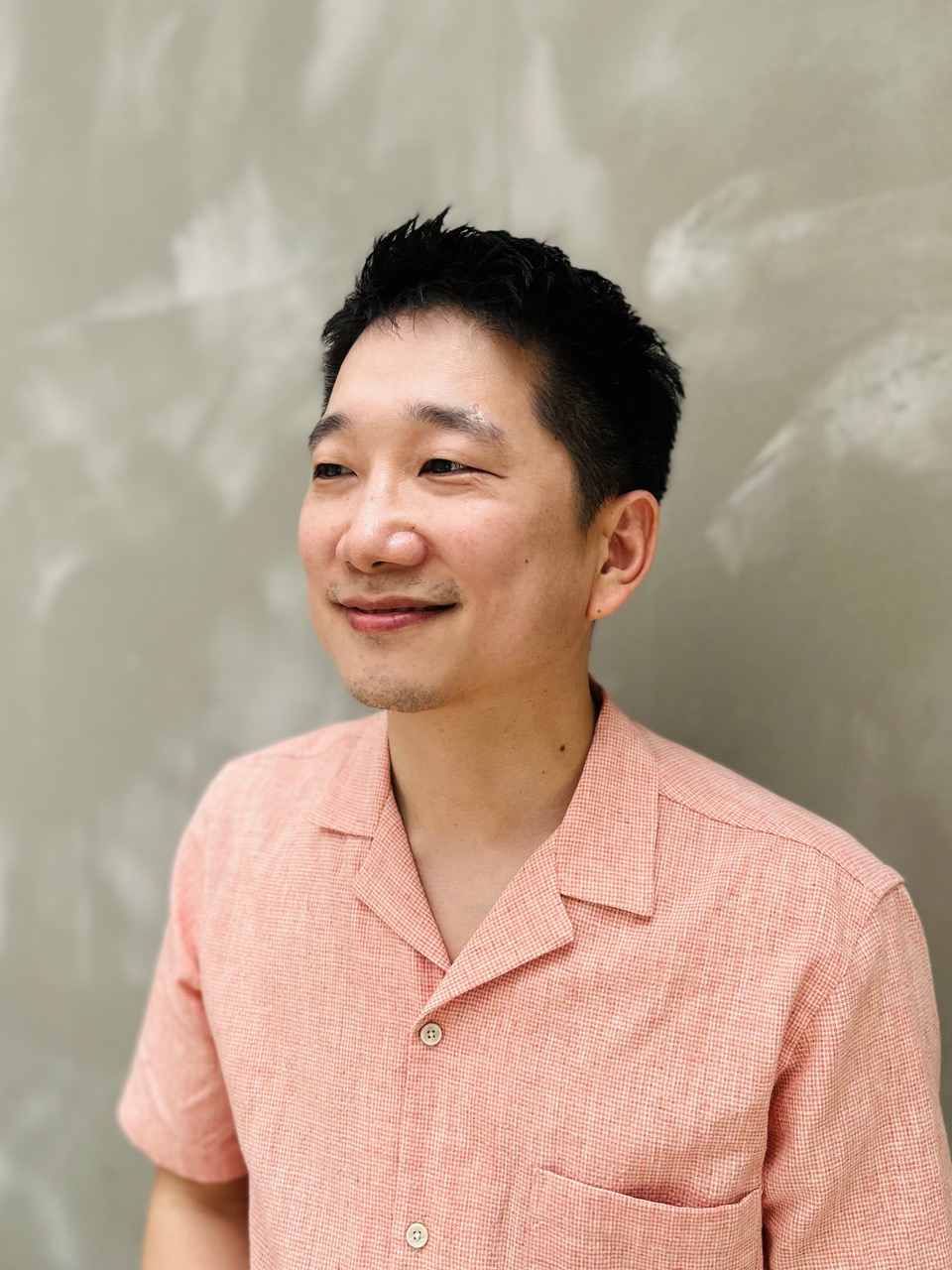 |
|
| Anton Hur | |
Anton Hur debuted in 2018 with his first literary translation, The Court Dancer by Kyung-Sook Shin. He's amassed dozens of credits in the few years since, while garnering unprecedented recognition, including becoming, in 2022, the first Korean translator longlisted and shortlisted for the International Booker Prize. Other accolades include nominations from the National Book Awards, Dublin Literary Book Awards, and the National Book Critics Circle Awards. Hur also became a first-time novelist with the spectacular Toward Eternity (HarperVia) earlier this year. His latest translation is also his first fantasy title, Kim Sung-il's Blood of the Old Kings (Tor, $27.99; reviewed in this issue), the first in a planned trilogy.
Your output has been explosive since your first title in 2018! I assume requests must outweigh your availability.
Very much not! The 2022 International Booker Prize double-longlisting [for Sang Young Park's Love in the Big City and Bora Chung's Cursed Bunny (also shortlisted)] was the "establishing event" for me. It was only after the Booker that I really started to turn things down, but mostly because I feel like it's the duty of established translators to do that for emerging translators or colleagues who are a better fit for the book. Before then, it was a real struggle, not just to get work but to get basic respect from Korean rightsholders and institutions. A lot of things changed because of the Booker and I'm so grateful for 2022. And we didn't even win!
Kim Sung-il's gratitude glows in his acknowledgements: "What Anton has accomplished with my original text is tremendous--as a translator myself, I could only hope to do so well. I thank him for his brilliant work." Can we assume that you'll finish the Mersia Trilogy?
Honestly, I cried a little when I saw that. He's such a gracious human being and a terrific writer. I tease him about how he's going to get tired of being called a master storyteller. Translating is easy when the source text is so excellent, and this book was extra fun because the book is more like a science fiction thriller than a classical fantasy epic, although it is that as well. I think I'm allowed to say that I've handed in Mersia II, and I'll start work on Mersia III early next year. I kept screaming with glee as I translated them, and I hope the glee translated onto the page!
You translate all manner of genres--literary fiction, short stories, essays, memoir, sci-fi/speculative, poetry. With Blood of the Old Kings, your first fantasy title, did your translating process change?
Oh yes, I definitely learned a lot translating high fantasy for the first time. I didn't read much fantasy before working on Blood of the Old Kings. I lean more toward science fiction, and Blood is helpfully very science fiction for high fantasy, you just have to replace fossil fuels with dead sorcerers, but you get that lovely epic sweep of fantasy that we all adore.
I have translators Jack Hargreaves and Robin Munby to thank for helping me get the voice for this book in workshop; they're much better read than I am, especially in this genre, and so the translation was much easier with their help. I approach genre like gender--it's all just marketing--and I'm more focused on creating the right author's voice in English. It's like getting sheet music and figuring out which instrument sounds the best for it.
How do you choose your titles?
I do have a genre preference for science fiction, but really I'm like any good reader--I love books and writing and stories and language and all of that, and very few actual readers read in just one genre. Everyone loves finding a book they otherwise would never have imagined could exist or change their life, and it's my job as a professional literary translator, as someone who works in publishing, to find those books and put them in front of readers. I'm always looking for a book like that, something I was surprised and delighted by. And those books always find me!
I can never thank translators enough for broadening my reading. You've become my go-to cipher into Korean literature, as I've sadly lost my Korean literacy.
The Asian American, and especially Korean American, reading community have been so crucial to the reception of my work, I would've been less than nothing without them. There is such complicated feeling around heritage language, and I do understand and feel bad that anyone should feel that way about circumstances beyond their control, and the political forces that surround language acquisition and language fluency. I think a lot about the role translation has in such communities and take this role very seriously.
You recently became an author with the speculative novel Toward Eternity. What was that process like, creating your own story instead of translating others?
The funny thing about this book was that it felt just like translating a book when I was writing--it kept telling me what was going to happen next and I just wrote that down. I didn't write the book, language did. Jon Fosse jokes that aliens tell him what to write through telepathy, or maybe he wasn't joking? Anyway, that was the vibe. It was editing the book that was very different, because my agent and editor requested major structural changes and that was really fun to do. My editor would suggest things so carefully and respectfully, and I would immediately pick up a sledgehammer and start whacking at the manuscript. It was so much fun to be able to just bash things, get rid of them, rewrite them, and write new chapters! Tara's suggestions especially became my favorite chapters of the book.
Will you be translating your novel into Korean?
Bora Chung will be translating it into Korean. Isn't that hilarious?
As I catch my breath at that news... enquiring minds must know--what can we expect next?
So really big things are coming down the pipeline translation-wise, like, huge. There's a fantasy tetralogy that I recently finished translating; the first volume of that will be coming out from Harper Voyager. We do have a title but we are trying to tweak it still, but every Korean I tell this news to gets very excited because the series is like our Game of Thrones and Tolkien rolled into one. It's beloved and legendary.
The other thing is that I'm a judge for the 2025 International Booker Prize and the longlist is going to be incredible. I know the power of this prize better than most people because I have experienced it at a level probably not even some actual winners have, so I am very keen on delivering a great time for readers, translators, writers, booksellers, reviewers, and the entire reading community. It'll be an amazing celebration.
Also there will be new Bora Chung, some authors who have never published in English before who I'm very excited about, and I'm also under contract to write a novel in Korean. So--that's a lot! --Terry Hong
Book Candy
Book Candy
Gastro Obscura shared "what researchers learned from the world's oldest cookbook."
---
CrimeReads recommended "the best medieval crime novels."
---
"A 31-year book-based treasure hunt is finally over," Reactor reported. "The famous golden owl has finally been located."
milk and honey
by Rupi Kaur
Rupi Kaur's milk and honey stayed on the New York Times bestseller list for nearly four years--no mean feat for a poetry collection, especially one that was originally self-published. Ten years and three more books later, her trademark themes of facing childhood trauma, breaking free from toxic relationships, becoming confident in one's sexual identity, and building resilience through sisterhood and creativity feel as relevant as ever.
This 10th anniversary collector's edition contains two additional chapters--new and unpublished poems and illustrations; and a look back at the book's publication history--as well as handwritten commentary in red (by the author) and blue (by six guest annotators). The four sections of the original release chart a journey through suffering toward emotional freedom: "the hurting," "the loving," "the breaking," and "the healing."
Kaur's style is casual and accessible throughout. The free verse bears minimal punctuation and no capitalization. Many of the pieces are no more than three or four lines. Against a white backdrop, the short phrases appear unassuming. They communicate pared-down, often aphoristic thoughts. The title phrase "milk and honey" appears several times; milk and honey are traditional medical ingredients in Punjabi culture, Kaur explains in an introductory note. Like these poems, they are balm to be shared with others.
Black-and-white sketches, roughly one every other page, illustrate an aspect of the poems with which they share space. Sometimes the art depicts human figures; other times it gives literal form to the metaphors.
New chapter "the remembering" adds poems that are stylistically and topically of a piece with the rest. Kaur reiterates core messages about self-love, choosing joy, and finding supportive community. She encourages readers to own their story: they will one day be able to look back and see beauty in who they are and what they have lived through. The final piece, "a love letter from me to you," expresses authorial gratitude, placing "my heart in your hands."
The final section, "the journey," tracks her development as an artist and author, and recaps the events of the intervening decade. This new edition is at once a treasure trove for fans of Kaur's forthright confessional verse and a perfect introduction for those experiencing her work for the first time. --Rebecca Foster
Just Choose Happiness
An Interview With Rupi Kaur
 |
|
| Rupi Kaur (photo: Baljit Singh) |
|
Rupi Kaur is a Canadian author of Punjabi Sikh heritage. She wrote most of her debut, milk and honey, while in college at Waterloo, Ontario, and honed her craft on Tumblr and Instagram and in open mic performances. milk and honey is one of the bestselling poetry books of the 21st century; it was originally self-published in November 2014. Her other books are the poetry collections the sun and her flowers (2017) and home body (2020), and the guided journal Healing Through Words (2022). Andrews McMeel is re-releasing milk and honey in a special 10th anniversary collector's edition (October 1, $24.99).
In the new chapter "the journey," you reveal that the poem always comes first for you, but the accompanying drawing follows quickly. Do you think about writing and art as using two different sides of your brain or tapping into two aspects of your personality, or is it more fluid than that?
It's definitely a lot more fluid than that. I feel like both the writing and the art come from the same part of my brain. I use the two mediums to express the same idea and I bring them together because the poems can do things the art can't do, and the art can do things for the reader that the poems can't do. And when I bring them together they can create a more impactful experience for the reader. Art was my first love. I started drawing when I was five and later began painting. I wanted to be a visual artist until I found the art of performance and it took my breath away. Then I began writing poetry to perform it on stage.
With the handwritten addenda on the poetry, you call attention to the interplay between then and now, almost like you're having a dialogue with your younger self. What are some of the key things you would tell the Rupi of 10 years ago?
I would tell my younger self to be much kinder to herself. God, was I tough on myself--and for what? I look back and think: I could've cut myself some slack emotionally and mentally. I would tell myself to expect to encounter many gatekeepers who say my dreams aren't possible--and that for every yes, there might be 100 no's--but just keep going and you'll find a way. I would also say: there will come a day when you look back on some of the things you wrote and feel SO differently about yourself and what you are experiencing. The pain will go away, you will love and be loved again, and 10 years later you'll still be asking yourself what love means to you, so don't punish yourself for not having all the answers right now--just choose happiness.
The guest commentary enhances the retrospective nature of this collector's edition. How did you decide to get these six women involved, and what do you feel that their words add to yours?
The six women who contributed to this edition are all dear friends who have been with me throughout my journey and touched me in various ways. Some have been by my side since middle school and were next to me while I experienced everything I've written about in milk and honey. Some have been with me since college as I was writing and releasing the book. And some I only connected with in recent years as women, artists, and activists. I wanted to include women who were touched by the book at different points in their lives because the guest commentary was also a way of celebrating the community that milk and honey has helped me build, and the fact that this book has become so much bigger than me, as it means so many different things to different people.
There are some frank disclosures here about members of your family. What sort of reactions did you receive from your parents and more distant relatives when this book was published? (For instance, you mention that the page where the text of a poem covers female genitals was your mother's least favorite drawing in the book.)
Ha ha! My parents are on board. They don't get too into questioning any of it because they know it's my art and I appreciate them for giving me that grace. Ten years ago, when I handed my mom the first copy of milk and honey, the page with the genitals was the first page she saw and I still remember her rolling her eyes and saying, "Oh my goodness, really? You couldn't pick anything else to draw?!" My family has played a big role in my journey. They've supported me every step of the way. When I first published milk and honey, my siblings were still in middle school and high school, and they helped me hand-sell copies of the book at the back of venues at any events I performed at. They were my pseudo managers, assistants, and so much more. My family is my strength. When it comes to the more sensitive pieces that touch on my family history, my parents tend to ignore the ones that make them uncomfortable, but no one has ever censored my work or silenced or shamed me for anything I've written.
The final poem, "a love letter from me to you," reminded me of a prayer. How would you describe your spiritual beliefs (or lack thereof)? What have you taken with you from your Sikh upbringing?
I am very moved and inspired by my Sikh upbringing. In the ways that I was taught to explore Sikhi, human rights were at the center of everything. This instilled a lot of empathy in me. The duty to fight against oppression--and fight for the freedom of all disenfranchised people--was at the core of Sikhi and what the community has been doing for centuries. The poetry, the music, the art, the history--it all gives me so much strength in the most challenging moments. We have survived genocides. Our ancestors sacrificed so much for us to be here today. When life gets hard, I think about that history and I realize that if we could survive all of that, I can survive anything I'm up against today. I feel really grateful to have access to this heritage and history.
How do you see yourself as leaving a legacy or paving the way for others--in terms of self-publishing, Instagram poetry, or just self-disclosure in general?
My hope is that my work inspires readers to speak up about their experiences and to find the courage to move forward. I hope it encourages them to find a medium that allows them to process and understand their own experiences, while reminding them to persevere and celebrate all their successes. I also hope that my work expands the boundaries of who is allowed to take up space and have their voices heard, both in the publishing industry and in the world at large. --Rebecca Foster
Rediscover
Rediscover: Lore Segal
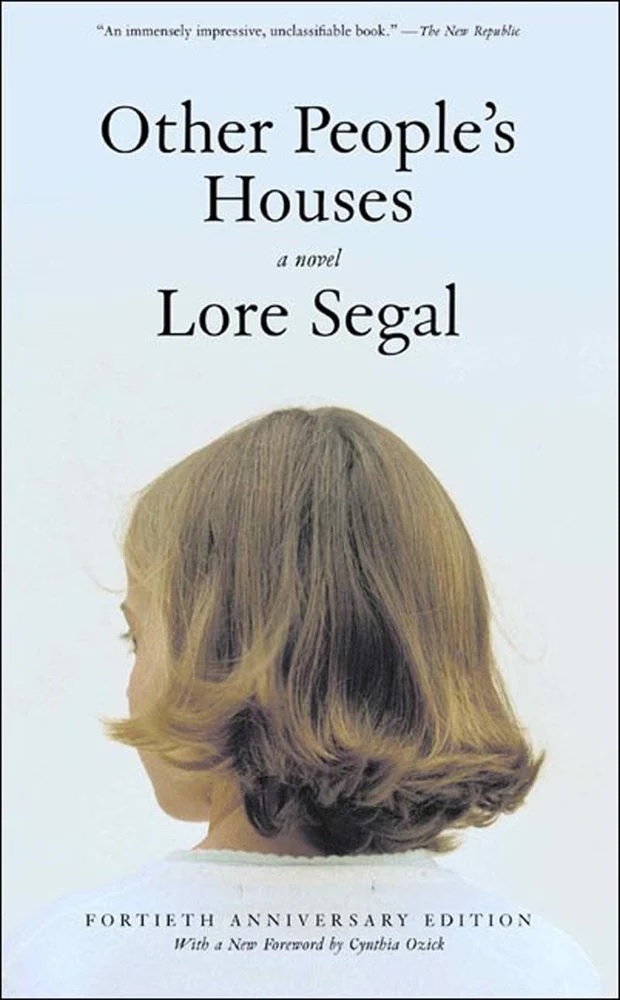 Lore Segal, "a virtuosic and witty author of autobiographical novels of her life as a young Jewish Viennese refugee in England and as an émigré in America," died October 7 at age 96, the New York Times reported. In 1938, she was one of 500 Jewish children who boarded a train in Vienna as part of the British-organized Kindertransport, and would live with four families over seven years. Her parents followed her in 1939, entering the country on domestic servant visas. Segal eventually settled in New York, where "she found her métier by telling tales of her exile."
Lore Segal, "a virtuosic and witty author of autobiographical novels of her life as a young Jewish Viennese refugee in England and as an émigré in America," died October 7 at age 96, the New York Times reported. In 1938, she was one of 500 Jewish children who boarded a train in Vienna as part of the British-organized Kindertransport, and would live with four families over seven years. Her parents followed her in 1939, entering the country on domestic servant visas. Segal eventually settled in New York, where "she found her métier by telling tales of her exile."
Segal worked as a clerk, a secretary, and a textile designer, taking night classes at the New School. In 1961, she married David Segal, who was then working in his father's textile company, but went on to be an editor at Knopf.
Other People's Houses, her memoir-disguised-as-a-novel, first appeared in serial form in the New Yorker before it was published as a book in 1964. She became a regular contributor to the magazine.
The book established Segal's place in the city's literary ecosystem, and "she went on to skewer, uproariously, the chattering, questing, anxious tribe in which she found herself. Lucinella (1976), a fantasy-satire, took on Yaddo, the writer's retreat in upstate New York, of which she was an alumna, among other familiar settings," the Times wrote. Her 2007 novel Shakespeare's Kitchen was a finalist for the Pulitzer Prize in fiction.
"I want to write about the stuff--in the midst of all the stew of being a human being--that is permanent, where Adam and Eve and I would have had the same experiences. I really am less interested in the social change," Segal told the Associated Press in 2011.
In Her First American (1985), Segal wrote about a young European Jewish refugee and her love affair with a charismatic and catastrophically alcoholic middle-aged Black intellectual, inspired by her own five-year relationship with Horace R. Cayton, a Black sociologist who died in 1970.
The book took 18 years to write. "I knew my Horace, I knew my Carter Bayoux, and I was raring to go," Segal said in a 2022 interview. "But I had no idea how to make a character out of the Ilka person. I settled on making her a newcomer and a naïf because I wanted to trace her Americanization and her growing sophistication by the use of her language."
Segal taught creative writing at Columbia, Princeton, Sarah Lawrence College, Bennington, Ohio State University, and the University of Illinois Chicago, to which she commuted from New York City for 14 years. Her fifth novel, Half the Kingdom, was published in 2013. She was also a prolific children's book author and a translator of the Bible and of Grimm's fairy tales, which she adapted into contemporary English in a collaboration with Maurice Sendak, titled The Juniper Tree (1973).
Melville House published Segal's books for the latter part of her career, including her last novel, Half the Kingdom; the novella Lucinella; an anthology collecting her fiction and nonfiction, The Journal I Did Not Keep; and her final book, the story collection Ladies Lunch.
Valerie Merians, Segal's editor at Melville House, said, "Lore was a woman of great charm and curiosity--about others, about all of life. Even at the end. Everything interested her. As she would say, 'Everything is copy.' And you can see it in her writing--so alive with inquiry and compassion. How wonderful that we have her brilliant work to visit with, though she herself is gone."
| Advertisement Meet belle bear! |



